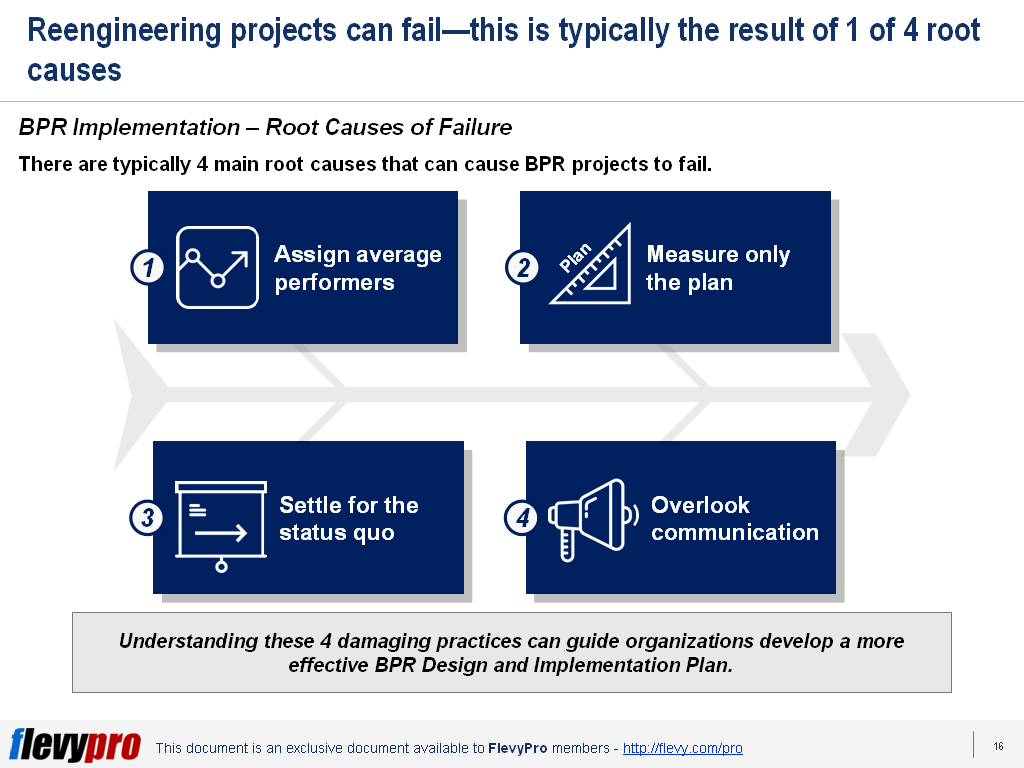
 Become a PowerPoint Guru by Dave Tracy
Become a PowerPoint Guru by Dave Tracy
Learn the methodologies, frameworks, and tricks used by Management Consultants to create executive presentations in the business world.

 Become a PowerPoint Guru by Dave Tracy
Become a PowerPoint Guru by Dave Tracy
Execution has become the new watchword in Boardrooms. As organizations fail to effectively implement strategies, the importance of execution has risen to the  forefront. Essentially, the first step in resolving these dysfunctions is to understand how the inherent traits of an organization influence and even determine each individual’s behavior. Organizations must also understand how collective behavior affects company performance.
forefront. Essentially, the first step in resolving these dysfunctions is to understand how the inherent traits of an organization influence and even determine each individual’s behavior. Organizations must also understand how collective behavior affects company performance.
The idiosyncratic characteristics of an organization can be codified using the DNA. When the DNA of an organization is purely configured, unhealthy symptoms and counterproductive behaviors are demonstrated.
DNA has been used as a family metaphor to codify the idiosyncratic characteristics of a company.
The Organizational DNA Framework examines all aspects of company architecture, resources, and relationships. It ensures that managers focus their efforts on reinforcing what works in the organization and modifying what does not. It helps companies identify and expose hidden strengths and entrenched weaknesses.
In identifying unhealthy symptoms and unproductive behavior, the Org DNA Profiler is used as a tool. It allows management to gain insight into what is and is not working deep inside a highly complex organization.
The Org DNA Profiler, as an Assessment tool, was used to fix problems by identifying and isolating them. Launched in 2003, the Org DNA Profiler measures an organization’s relative strength in 4 Building Blocks on the basis of individual employees’ responses to 19 questions.
When diagnosing and overcoming organizational impediments, there is also a need to identify the type of organization that you have. There are 7 broad types of organizations; each organization fitting a certain type.
There is a Resilient Organization. A Resilient Organization can adapt quickly to external market shifts. It can remain steadfastly focused on and aligned with a coherent business strategy. Resilient Organizations can anticipate changes routinely and addresses them proactively. They can attract motivated team players and offers a stimulating work environment, resources, and authority to solve tough problems.
However, there is also a disadvantage when it comes to Resilient Organizations. Resilient Organizations have the tendency to be overly adapted toward one direction or the other.
Another type of organization is the Just-in-Time Organization. The JIT Organization demonstrated an ability to turn on a dime when necessary, without losing sight of the big picture. They can manage to hold on to good people and performs well financially. A Just-in-Time Organization is a stimulating and challenging place to work.
While this may be a good place to work, it can also have its disadvantages. A Just-in-Time Organization is not proactive in preparing for impending changes. In fact, it has not made a leap from good to great. As such, it tends to miss opportunities by inches rather than miles. It celebrates successes that are marginal rather than unequivocal.
The third type of organization is the Military Organization. This type of organization succeeds through sheer force of will of top executives. However, it has a shallow and short-lived middle management bench.
There are 4 other types of organizations. There can be the Passive-Aggressive Organization, the Fits-and-Starts Organization, the Outgrown Organization, and the Overmanaged Organization.
The Passive-Aggressive Organization is considered the most prevalent of all types of organizations. The Outgrown and Overmanaged Organizations, on the other hand, are those that are often considered unhealthy.
The intricacies and defining characteristics of the 7 types of organizations are effective in creating specific interventions to enhance performance and execution. Knowing and understanding the types of organizations can better assist organizations in the analysis of their DNA and guide them in undertaking Business Transformation or Strategy Development.
Interested in gaining more understanding of Organizational DNA? You can learn more and download an editable PowerPoint about Organizational DNA here on the Flevy documents marketplace.
Are you a management consultant?
You can download this and hundreds of other consulting frameworks and consulting training guides from the FlevyPro library.
Organizations can change over the years. Change may happen because that is what the customers expect or it is because the organization gets to have even the most  coveted skills. Despite the changes, there are those that stay the same—the organization’s brand, its unique culture, and its shared lexicon. These are the underlying organizational and cultural design factors that define an organization’s personality. Metaphorically, these are called Organizational DNA. The Organizational DNA can indicate whether the organization is strong or weak in executing strategy.
coveted skills. Despite the changes, there are those that stay the same—the organization’s brand, its unique culture, and its shared lexicon. These are the underlying organizational and cultural design factors that define an organization’s personality. Metaphorically, these are called Organizational DNA. The Organizational DNA can indicate whether the organization is strong or weak in executing strategy.
Today, execution has come to a fore as organizations fail to effectively implement strategies. Organizations now realize that it must first resolve this dysfunction by understanding how the inherent traits of an organization influence and even determine each individual’s behavior. The idiosyncratic characteristics of an organization can be codified using the DNA. When the DNA of an organization is purely configured, unhealthy symptoms and counterproductive behaviors are demonstrated. High performing organizations have shown that there are precepts that they closely follow to ensure that their Organizational DNA is in order.
The 10 Principles of Organizational DNA are the precepts upon which high-performance companies are built on.
Let us take a look at 5 of the 10 Principles of Organizational DNA.
The other 5 core principles of Organizational DNA are essentially necessary. Even the company with the most desirable profile, the resilient organization, must continually stay at the top of the game. Hence, it is essential that organizations must adopt the most appropriate behavioral pattern and personality to be able to build high-performance organizations. Strategy Development must be able to integrate into the organization’s Business Transformation the 10 core principles of Organizational DNA.
Interested in gaining more understanding of these principles of Organizational DNA?? You can learn more and download an editable PowerPoint about Organizational DNA: 10 Core Principles here on the Flevy documents marketplace.
Are you a management consultant?
You can download this and hundreds of other consulting frameworks and consulting training guides from the FlevyPro library.
Our framework Post-merger Integration (PMI): Financial integration is every organization’s guide to achieving the financial alignment of both Buyer and Target.
Post-merger Integration is a highly complex process. It requires swift action as well as running the core business activities simultaneously. There is no one-size-fits-all approach to a successful PMI Process. However, careful planning focusing on the strategic objectives of the deal and the identification and capturing of synergies will help maximize deal value.
Another critical factor in PMI is pursuing Financial Integration. Financial Integration is the alignment of the finance functions of the Buyer and Target.
Immediately from the start of the deal, the new organization gets to be dependent on the Finance function to ensure a successful integration process. Synergies must be captured in order to maximize deal value and provide combined organizations with the flexibility to grow.
When pursuing Financial Integration, there must be an integration of business operations, streamlining of the internal control environment, provision of accurate and consistent financial reporting, ensuring tax compliance jurisdictions if the deal is cross-border, and the founding of interim legal structure and business processes. When setting the right direction for a streamlined finance function, it is important that the organizations must already tackle critical matters while still in the early stages of a deal.
The establishment of clear reporting lines must already be agreed upon and set up. Accountability for financial operations, management reporting, control of expenses, and accounting closing procedures must already be established and clear between the Buyer and the Target. These play a vital role when the organization undertakes a Strategic Planning geared towards the development of a Financial Integration Strategy and Plan.
The Financial Integration Strategy can only be defined and crafted only when immediate areas that require action have already been identified. The Strategy must be developed based on 8 key areas of focus.
Aside from the 3 focus areas, the development of the PMI Financial Integration Strategic Plan must also give serious consideration on Financial Statements, Procurement, Financial Planning, Cash Controls, and Tax. These 5 focus areas are essentially important as it ensures that Financial Integration essentials are met.
When this is achieved and the 8 key areas of focus are integrated into the Financial Integration Plan, the new organization gets to prepare itself towards a larger scale Business Transformation in the future.
Interested in gaining more understanding of the Financial Integration component of PMI? You can learn more and download an editable PowerPoint about Post-merger (PMI): Financial Integration here on the Flevy documents marketplace.
Are you a management consultant?
You can download this and hundreds of other consulting frameworks and consulting training guides from the FlevyPro library.
No free lunch was ever served quickly. Traditional supply chain cannot offer both low prices and fast delivery.
Online retailing has changed. Before, we see e-commerce companies fulfilling consumer demand from a small number of large-scale warehouses that carried a similar catalog of items. Inventory for low-volume products was maintained in a few locations as possible while maintaining service levels that met customer expectations.
Today, consumers are demanding more than just low prices. Consumers are also demanding that products ordered be delivered quickly. As a result, the demand for quick day delivery is now pushing retailers to experiment with new Strategy Development and operation models. Notably, known retailers such as Amazon.com, Nordstrom, and Macy’s are redesigning their distribution networks. Retailers today have recognized that the terms of competition have changed.
The early days of online retailing were not as competitive as today. Inventory costs were kept low and economies of scale that large fulfillment centers provide are taken advantage of. Consumers were willing to wait for deliveries as proximity and speed were less important than cost savings.
But today, customer expectations go beyond lower prices. The Fourth Industrial Revolution has changed the terms of competition in online retailing.
Achieving same-day delivery has moved retailers to use third parties (local city-specific delivery services) and crowdsourcing (paying individuals by the task to shop for and deliver groceries). Retailers are also looking at setting up physical lockers where customers can retrieve their packages or use of physical store networks to fulfill online orders. Others are adding warehouses near major urban markets and IT solutions are now being used to access real-time sales data and inventory information.
The chain in the online retailing landscape has changed and there is now an increasing need to achieve Agility in Supply Chain Network Design.
What is putting Agility in Supply Chain Network Design or Distribution Agility? It is the ability to invest in real-time sales and inventory information, coupled with advanced analytics to accommodate fluctuations and changes in the business environment quickly. This is Agility in Supply Chain Network Design.
Putting Agility in Supply Chain Network Design requires a 3-phase process. Let us take a look at one of the 3 phases: The First Phase.
The First Phase is to Reinvent Network Design Thinking. This phase has an important implication on cost performance as they relate to customers. It requires redesigning the physical distribution network and the information network for it to be able to support the Supply Chain Network Design. The first phase ensures that the real-time information system is in place that incorporates data on sales by time and location.
Once the first phase is undertaken, this will facilitate an immediate response to agile and traditional systems. This is what Amazon.com Inc. did. Amazon opened 43 small-scale delivery stations and 53 hubs to augment a distribution network of 101 fulfillment centers and 29 sorting centers. They applied real-time stock visibility across the network and intelligent product replenishment and fulfillment to mitigate the cost of trade-off. As a result, it allowed them to effectively and immediately respond to changing consumer demands. While not all online retailers can be like Amazon, yet all can have an Agile Supply Chain Network to make them competitive in today’s digital era of Business Transformation.
Putting the other 2 phases in place will complete the entire process of ensuring an Agile Supply Chain Network Design. Why is agility important? Agility in Supply Chain addresses the outmoded conflict between low prices and fast delivery. It enables organizations to build strategies that can make adjustments both at the planning and operation levels.
Interested in gaining more understanding of Agility in Supply Chain Network Design? You can learn more and download an editable PowerPoint about Agility in Supply Chain Network Design here on the Flevy documents marketplace.
Are you a management consultant?
You can download this and hundreds of other consulting frameworks and consulting training guides from the FlevyPro library.
In today’s digital age, organizations are faced with the changing nature of the demand curve and the element of uncertainty in the supply chain. For operations  teams, the challenge and competitive advantage have become: How well do you respond and execute against ongoing uncertainty.
teams, the challenge and competitive advantage have become: How well do you respond and execute against ongoing uncertainty.
With the world being so unpredictable, chaos is now the new normal. Timetables and priorities have shifted. A supplier fails to deliver. Demands on supply chains are increasing exponentially. A few years ago, supply chain performance was all about batch quantities, timetables, and lead times. Today, millions of packages are shipped in a day, with many with just only a few items.
In the face of this upheaval, supply chains try to predict what will happen, then optimize performance against plan. Most often, those plans are not met. The path forward demands a bold leap in supply chain performance.
Chaos is the new normal. This is the central challenge companies have to contend with today. Demand on the Supply Chain is increasing exponentially whereas Supply Chain performance before used to be all about batch quantities, timetables, and lead times. Today, times have changed.
Business Transformation has become pertinent. Timetables and priorities have shifted and, in fact, suppliers are now finding themselves unable to deliver at the required time demanded by the market. Whereas before deliveries were in batch quantities, today millions of packages are shipped every day with many having just a few items. Customers are now encouraged to order multiple sizes and colors of the same items, choose what they like best and return the rest.
In this upheaval, Supply Chains must respond accordingly. There have been attempts to predict what will happen with performance being optimized against the plan. Companies are increasingly investing in Supply Chain capabilities. Yet, these have triggered nonproductive finger-pointing and disappointing results.
Something is missing. A Supply Chain Strategy, as part of Strategy Development, is now essential to be able to pursue a bold leap in Supply Chain performance.
The Digital Supply Chain Strategy is the new approach to Supply Chain resilience. This is best undertaken using a 2-prong approach.
The Digital Age calls for a new approach to Supply Chain Resilience.
Why is Supply Chain Resilience important today? In today’s digital age, companies can expect to encounter potential disruptions. These potential disruptions can effectively be addressed using the best strategy. Automation and smart software are effective tools for minimizing disruptions on business operations. Embracing digital advancements will provide organizations real-time data for a more reliable supply value chain. Definitely, there will be integration challenges. But the use of Digital Age Supply Chain Strategies will guide companies to counter these potential disruptions and challenges.
Interested in gaining more understanding of Digital Supply Chain Strategy? You can learn more and download an editable PowerPoint about Digital Supply Chain Strategy here on the Flevy documents marketplace.
Are you a management consultant?
You can download this and hundreds of other consulting frameworks and consulting training guides from the FlevyPro library.
Many Boards have improved their structures and processes. Yet, despite all the corporate-governance reforms undertaken, many Boards failed  the test of the financial crisis. This shows that even if the Board of Directors is stacked with high qualified members and best practices, these are not enough.
the test of the financial crisis. This shows that even if the Board of Directors is stacked with high qualified members and best practices, these are not enough.
Human Dynamics has come to fore in today’s highly volatile business environment. Without the right Human Dynamics, there will be a little constructive challenge between independent Directors and Management, no matter how good the Board’s processes are.
Without Human Dynamics, the Board’s contribution to the company’s fortune is likely to fall short of what it could and should. This is also a concern for executives who are not Directors but report to the Board. Without Human Dynamics, it makes it difficult for them to develop healthy and productive relationships with their Boards. This can have a dire effect on Strategy Development or when organizations are undergoing Business Transformation.
Human Dynamics is an organizational state where collaborative CEO and Directors think like owners and guard their authority. Without the right Human Dynamics, there will be a little constructive challenge between independent Directors and Management.
Why is Human Dynamics important? When there is a lack of Human Dynamics between CEO and Directors, this can lead to an ineffective performance in the Boardroom. Board’s contribution to the company’s fortunes will fall short of what it could and should be. Non-director executives will have difficulty developing a healthy and productive relationship with the Board. Most importantly, aspiring Directors will be unable to learn what it means to be a good corporate Director.
This can be detrimental to the organization and can direly affect its competitive advantage. However, achieving the right Human Dynamics is not easy. Understanding and identifying the contours of such a fluid interpersonal exchange can be a challenge to both the Board and the CEO.
While it may be a challenge, building the right Human Dynamics between the CEO and the Directors is essential. There are 3 Tests executives can use to guide them in assessing the Board’s Human Dynamics.
The 3 Tests for Boards is an effective guiding principle in developing the right Human Dynamics between the Board and the CEO. When it comes to well-functioning Boards, best practice structures are not enough. It is essential that the right Human Dynamics exists as it can help the Board and Management to fulfill their potential.
Interested in gaining more understanding of Board Excellence through Human Dynamics? You can learn more and download an editable PowerPoint about Board Excellence: Human Dynamics here on the Flevy documents marketplace.
Are you a management consultant?
You can download this and hundreds of other consulting frameworks and consulting training guides from the FlevyPro library.
Business Process Reengineering (BPR) can be a great success but it can also be a great failure.
After months or years of careful redesign, organizations can achieve dramatic improvements in individual processes. However, a paradoxical outcome has become almost a commonplace. Organizations suddenly find themselves watching the overall results decline. Process costs were reduced by 34% yet operating income stalls. Claims process time cut by 44% yet profits drop. It seems that organizations are squandering management attention and other resources on projects that look like winners but fail to produce bottom-line results for the business unit as a whole.
Reengineering can actually deliver revolutionary process improvements and many organizations have been undertaking major reengineering effort. However, like any major change program, a reengineering project can produce lasting results only if it is designed and implemented the right way.
BPR implementation is a series of waves that can wash over the organization for years, leaving a system for continuous improvement. It must be undertaken with a clean slate approach to process design. Only then can companies avoid a classic reengineering pitfall of focusing on fixing the status quo.
Implementation of the Business Process Reengineering requires that new infrastructures are planned and built to support this Business Transformation. The full commitment of senior executives on its redesign and implementation must also be present to ensure the success of the reengineering project.
It is essential that organizations have a good understanding of the success factors, as well as root causes of failure. While reengineering projects can succeed, it can also fail. There are 4 practices that are the most damaging.
The root causes of failure remain a challenge for organizations. These are 4 causes they must watch out for to achieve a successful BPR implementation.
BPR implementation requires a small group format where employees can give feedback and air their concerns. This may be time-consuming but it is important. In fact, organizations must create a comprehensive communication program that uses a variety of methods of communication. When this is undertaken, the chances of succeeding during the BPR implementation is high.
BPR implementation is most crucial. Hence, organizations must have a keen eye, as well as strong leadership development and commitment, to pursue it despite its challenges. BPR implementation is a series of waves that can wash over the organization for years. Hence, a system of continuous improvement must be in place.
Interested in gaining more understanding of Business Process Reengineering (BPR) Implementation Guidelines? You can learn more and download an editable PowerPoint about Business Process Reengineering (BPR) Implementation Guidelines here on the Flevy documents marketplace.
Are you a management consultant?
You can download this and hundreds of other consulting frameworks and consulting training guides from the FlevyPro library.
The global economy is currently producing nearly 300 million tons of plastic every year, Half of these is for single use. With the population  growing at a fast rate, we are requiring more resources than ever before. Yet, our finite resources are diminishing
growing at a fast rate, we are requiring more resources than ever before. Yet, our finite resources are diminishing
Our economy has been built on the concept of a Linear Economy. This is Extract, Manufacture, Distribute, Use, and Dispose of. However, over the past few decades, we have transitioned to a disposable society as we generate waste at an unmanageable rate.
Today’s Business Transformation calls for a shift to a Reuse Economy or the Circular Economy. Moving towards a more Circular Economic activity could deliver benefits such as reducing pressure on the environment, improving the security of the supply of raw materials, increasing competitiveness, stimulating innovation, and others. Moving into a Circular Economy also means that companies are considering sustainable approaches to balance out opportunities for business and the preservation of the environment.
The Circular Economy is an economic system aimed at eliminating waste and the continual use of resources. It employs recycling, reuse, remanufacturing, and refurbishing to create a close system. With Circular Economy, it minimizes the use of resource input and the creation of waste.
A Circular Economy has a great impact on sustainability. It maximizes the conservation of resources and the reduction of environmental pollution.
In a Circular Economy, industries can increase profitability while reducing dependence on natural resources.
The 6 Core Activities of a Circular Economy are stepping stones towards increasing productivity, cost savings, and generating greater economic benefits.
Taking the 6-step journey to achieve greater sustainability can lead organizations to draw on the power of the Circular Economy to achieve greater value. Let us take a purview of a Circular Economy in action: The Waste Management Case Study
The Waste Management Case evolves in a scenario where the economic growth in emerging markets has raised living standards resulting in massive waste. As such, municipalities in these markets are spending up to half of the budget on solid waste management.
As a result of economic growth, there is massive consumer and industrial waste generated. In fact, metals extracted from tires in open backyard fires can cause great harm to human health and the environment.
We are in this dilemma right now. With the application of the Circular Economy, we can better address these problems by creating infrastructures to organize and manage waste supply chains. This can include digital transformation.
What is the underlying Circular Economy Principle? It is AGGREGATION. With this principle, we can aggregate volumes substantial enough to justify the business investment. We can enable companies to build the business from waste.
Interested in gaining more understanding of Corporate Social Responsibility: Circular Economy? You can learn more and download an editable PowerPoint about Corporate Social Responsibility: Circular Economy here on the Flevy documents marketplace.
Are you a management consultant?
You can download this and hundreds of other consulting frameworks and consulting training guides from the FlevyPro library.
 Inculcating productive workforce behaviors is of utmost significance in Business Transformation, successful Strategy Execution, and Performance Improvement. However, making people embrace productive behaviors involves a concerted effort across the organization.
Inculcating productive workforce behaviors is of utmost significance in Business Transformation, successful Strategy Execution, and Performance Improvement. However, making people embrace productive behaviors involves a concerted effort across the organization.
The realization of Transformation, Strategy, and Performance improvement goals can become a reality by developing a thorough understanding of the 4 components of Organizational Behavior. These components act as powerful levers in shaping the desired behaviors in the workforce:
These Organizational Design levers work effectively when combined and aligned. Let’s discuss the first 2 levers in detail now.
Organizational Structure represents the management reporting lines that create the organization’s spans of control, layers, and number of resources. Organizational Structure is a foundational driver to Organizational Design, which also has a strong positive bearing on promoting the behaviors critical to improve the overall performance of the enterprise. This is owing to the power that a position exerts on the subordinates based on factors that are important for individuals—e.g., work, compensation, and career ladder.
The Organizational Structure indicates an enterprise’s priorities. An organization is typically structured in accordance with its top most priority. For instance, functional organizational structure is adopted by enterprises having functional excellence as a priority. In present-day’s competitive markets, most organizations have to deal with several priorities at a given time, which could be conflicting. However, this does not mean adding new structures on top of existing ones, thereby increasing unnecessary complexity. Creating overly complex structures to manage multiple priorities results in red tape and delayed decisions. All roles are interdependent, necessitating cooperation. This means taking care of the needs of others—instead of just watching over personal priorities—and encouraging individual behaviors that boost the efficiency of groups to achieve collective objectives.
Roles and responsibilities deal with tasks allocated to each position and individual. Organizational Design depends heavily on redefining clearer and compelling roles and responsibilities—to avoid any duplication of efforts or creating adversaries among team members. In a collaborative culture where cooperation is the mainstay of an organization, individuals should not only be aware of what is required of them, but also appreciate the responsibilities of their team members, the authorities their roles exercise, the skills required, and the metrics to measure success.
A methodical way to outline roles and responsibilities effectively—while minimizing complexity—that encourages cooperation and empowerment is through the “Role Chartering” technique. The technique requires distinctly identifying all roles on the basis of 6 key factors:
Interested in learning more about these components to Organizational Behavior? You can download an editable PowerPoint on Organizational Behaviors here on the Flevy documents marketplace.
You can download this and hundreds of other consulting frameworks and consulting training guides from the FlevyPro library.
“The only thing that is constant is Change.” – Heraclitus
An epidemic of change is happening globally–reengineering, restructuring, and revamping! Workplaces seem to be launching one change initiative after another. Digital Transformation is happening everywhere. Yet, the hard truth is that many change initiatives fail.
Change Management initiatives fail because of the way organizations view change. Often, change is seen as an isolated process. Organizations tend to focus on only one part of the organization in isolation. This can be a fatal error.
Everything in an organization is connected, and changing one piece can impact another. Hence change can only be successful if all interconnected pieces are considered. In 1965, Harold J. Leavitt designed an integrated approach to change, the Leavitt’s Diamond.
Leavitt’s Diamond is a framework for understanding the connection between the key factors in an organization, and building an integrated change strategy. This is an essential element in Strategy Development.
The Structure, Tasks, People, and Technology are the 4 essential components of the Leavitt’s Diamond.
Between these 4 components, there must be the right balance. Only then can change be successfully implemented.
Having a good understanding of the Leavitt’s Diamond is important for organizations. However, the most critical is having it on the ground running. Each of the components must be identified, defined, and determined–your main tasks, your people, your tasks, and structure.
This is critical because you are building a basic framework for starting the change model. Without the right balance of Structure, People, Tasks, and Technology, the Business Transformation necessary will never occur.
Organizations must also take note that a primary change will always have an impact on each of the 4 components. A change in one component comes with changes in other components of the Leavitt’s Diamond. When this happens, there is a need for necessary adjustments.
This is also expected when there is a change in Technology and a corresponding impact on Tasks. Organizations must need to take note that changes in any component must be aligned with changes in other components. Again, there must be a balance for Leavitt’s Diamond Change Model to succeed.
Interested in gaining more understanding of the Leavitt’s Diamond Change Model? You can learn more and download an editable PowerPoint about Leavitt’s Diamond here on the Flevy documents marketplace.
Are you a management consultant?
You can download this and hundreds of other consulting frameworks and consulting training guides from the FlevyPro library.
Error: Twitter did not respond. Please wait a few minutes and refresh this page.